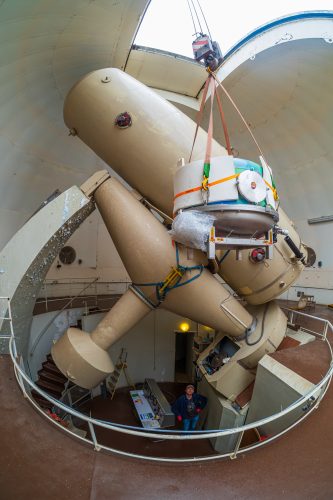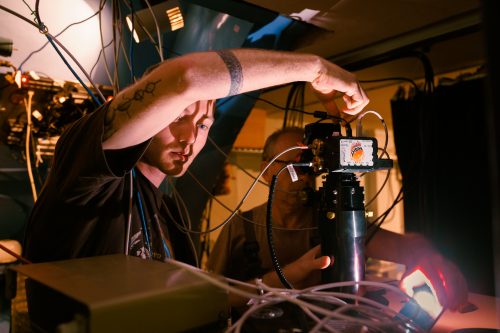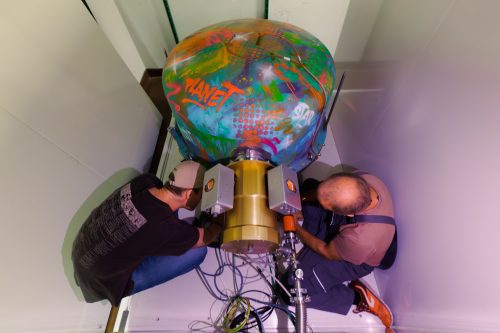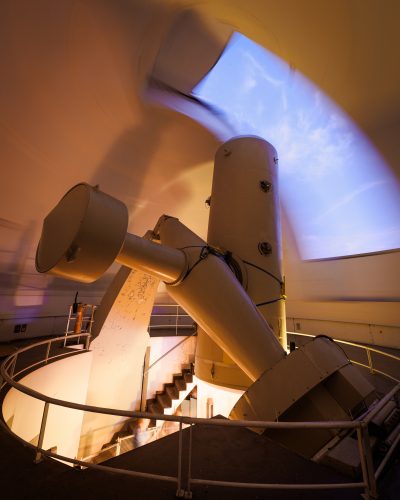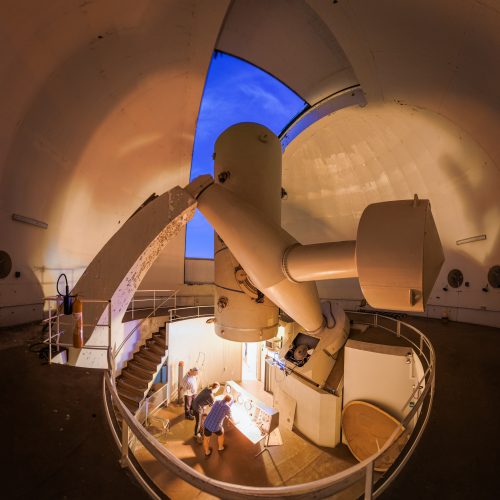NIGHT – A new instrument to detect Helium in exoplanet atmosphere
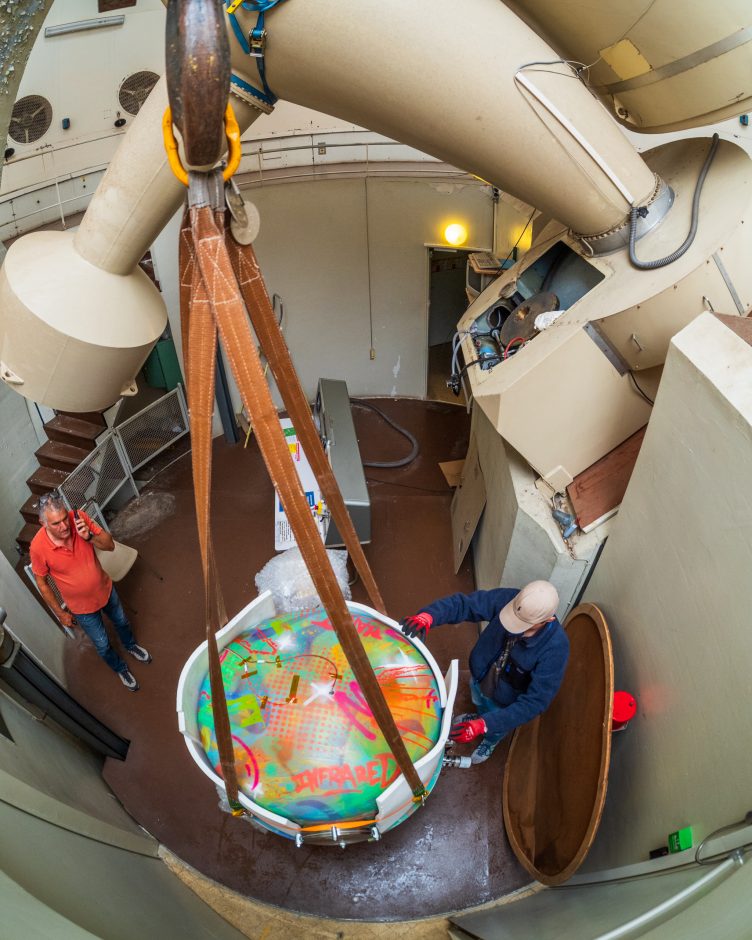
The NIGHT (Near-Infrared Gatherer of Helium Transits) project is an instrument constructed at the Department of astronomy of the University of Geneva by members of the NCCR PlanetS, that will be used to study the near-infrared atmosphere of exoplanets during their transit. Helium indeed absorbs a thin band of infrared colours, enabling astronomers to detect it. In August, the instrument was successfully installed at the Observatoire de Haute-Provence in France.
Helium is the second most abundant element in the Universe and the second lightest, after hydrogen. As a result, stars and gas giant planets like Jupiter or Saturn in our Solar System contain large amounts of it. Astronomers have long sought to detect this atom in the atmospheres of exoplanets, but only succeeded in doing so since 2018. Helium escaping from exoplanets provides a way to study the evolution of atmospheres in hot gas giants. The development of NIGHT, an instrument dedicated to the detection of helium, will enable the characterisation of a large number of these exoplanets.
Some exoplanets, especially those close to their stars, are losing parts of their atmospheres due to strong radiation. This process, called atmospheric escape, is important for understanding how planets evolve over time. NIGHT is a small, specialized spectrograph (a tool that splits light into its colors) that looks at a particular “fingerprint” of helium gas in the near-infrared. By tracking helium signals during planetary transits (when a planet passes in front of its star), NIGHT can reveal how atmospheres expand and leak into space. Unlike space telescopes, NIGHT can work from the ground, is relatively low-cost, and uses mostly standard components. It has been mounted on a small telescope (152 cm diameter), making it easier to schedule long-term surveys of many planets. Simulations show NIGHT can detect helium signals in more than 100 known exoplanets, and even monitor changes in these signals over time. This will help scientists study why certain types of planets, like “hot Neptunes,” are rare, likely because they lose their atmospheres.
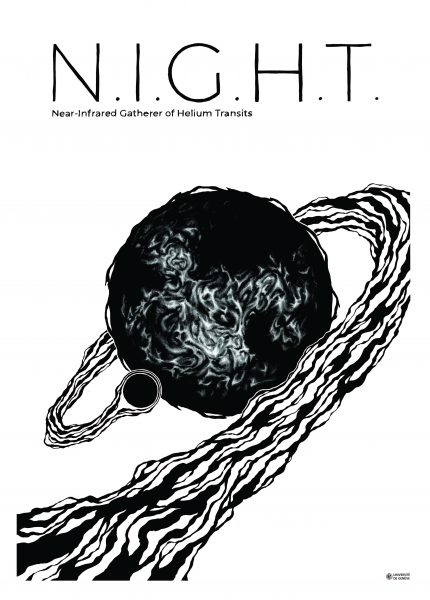
Gas giant planets close to their star may experience the escape of their atmosphere due to the strong irradiation from the star.
Under certain circumstances, helium escaping from the atmosphere can form a long trailing tail resembling that of a comet.
Credits : Theo Phildius
Categories: News

